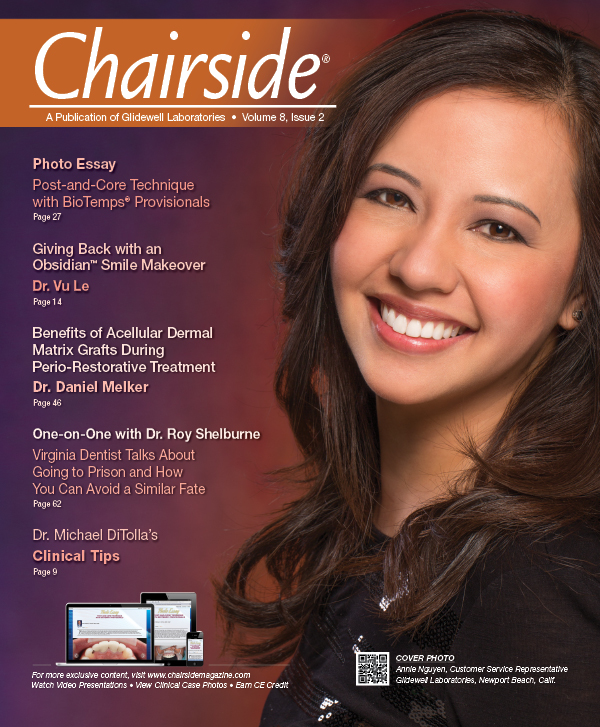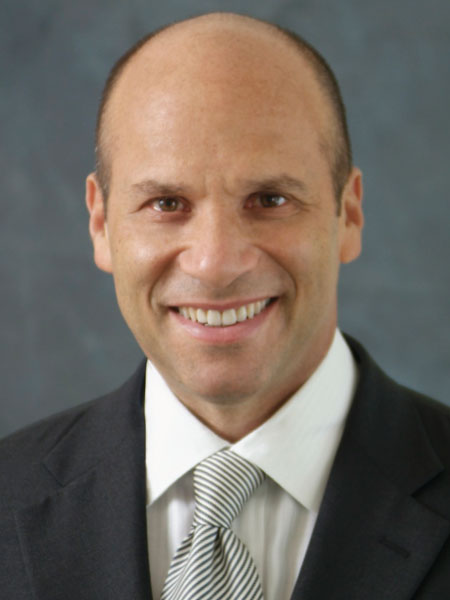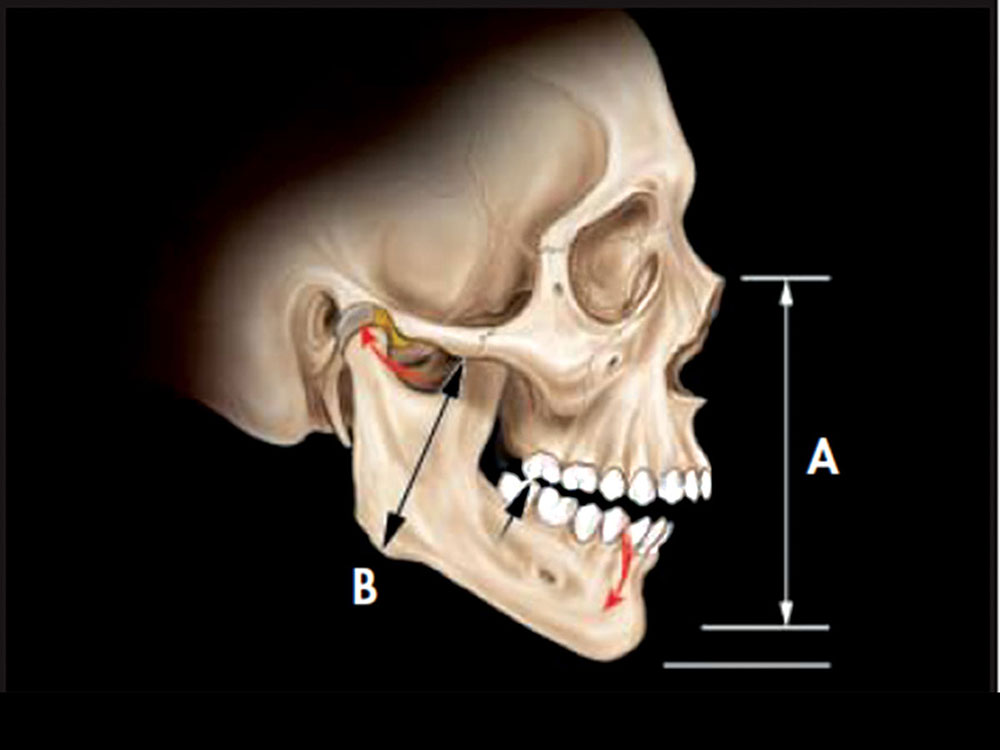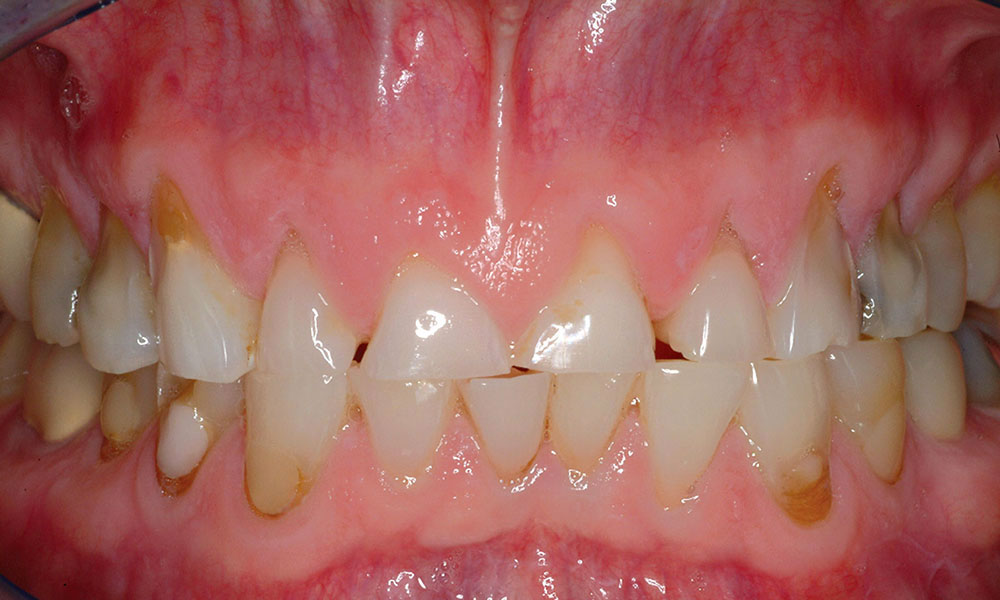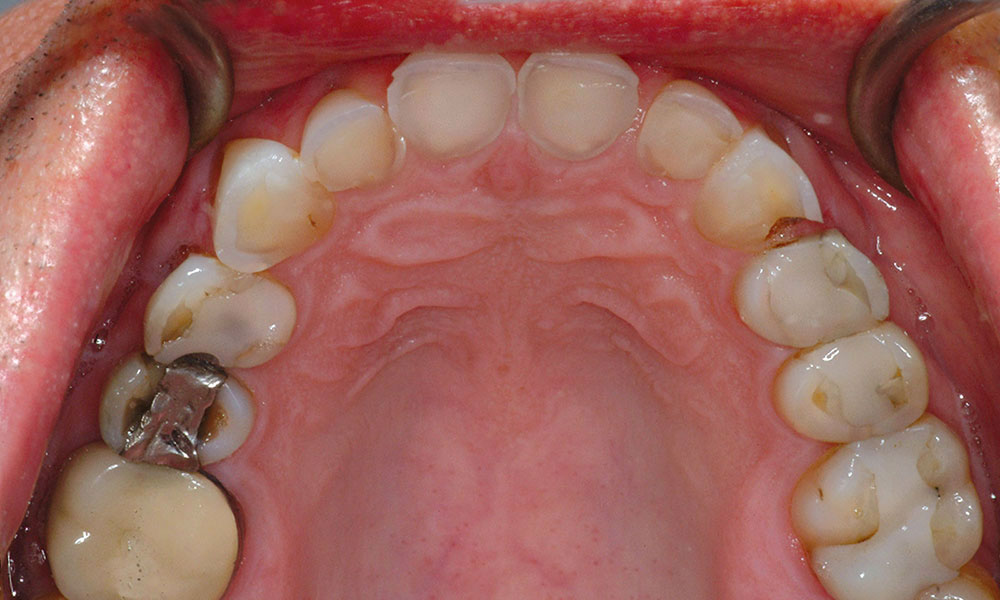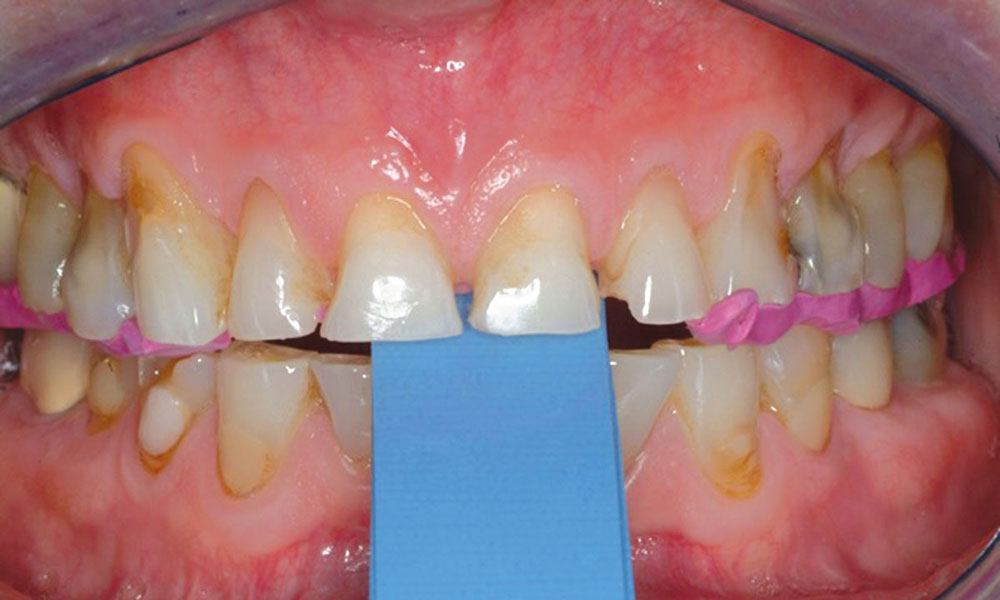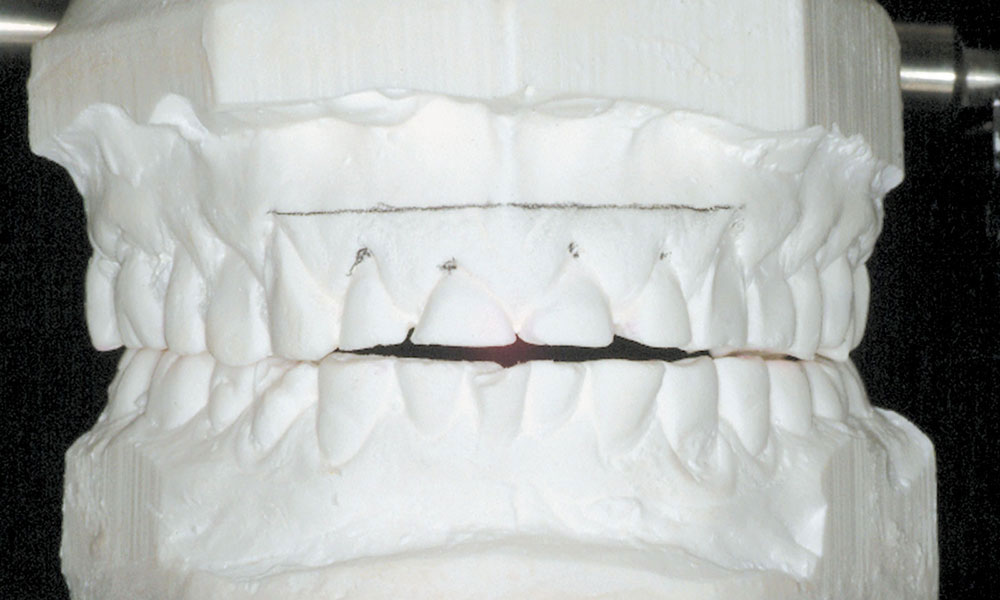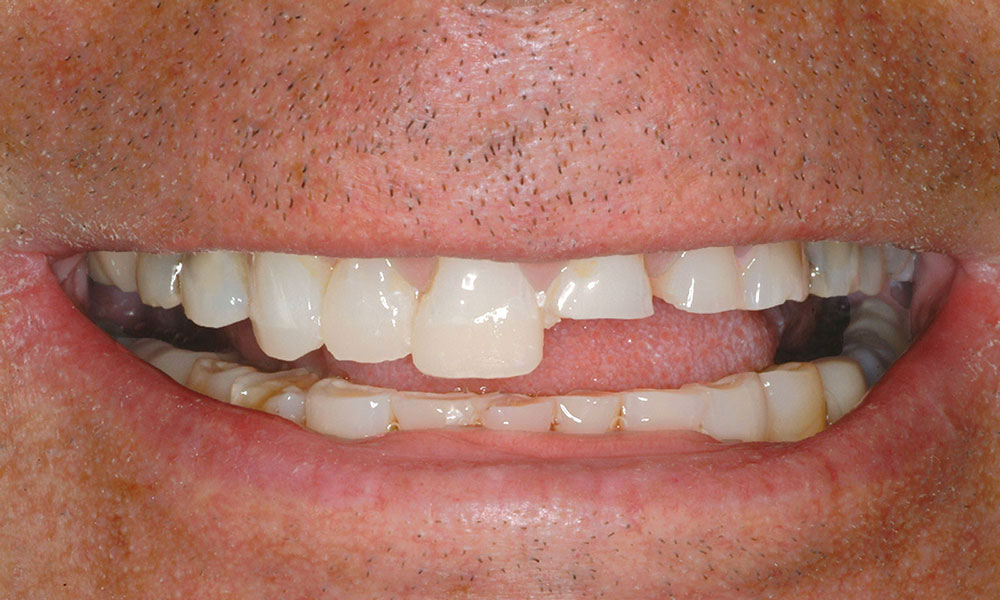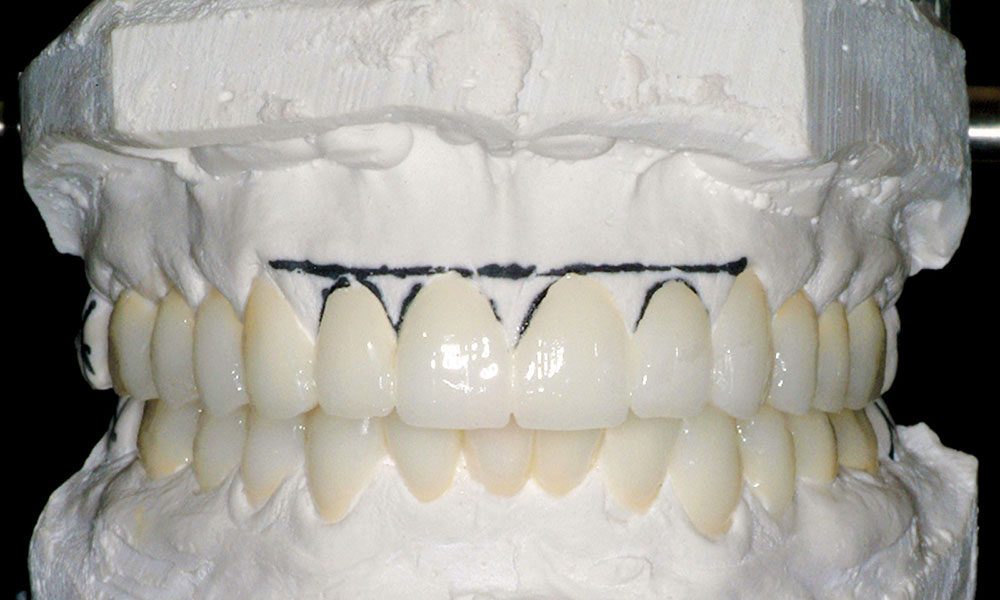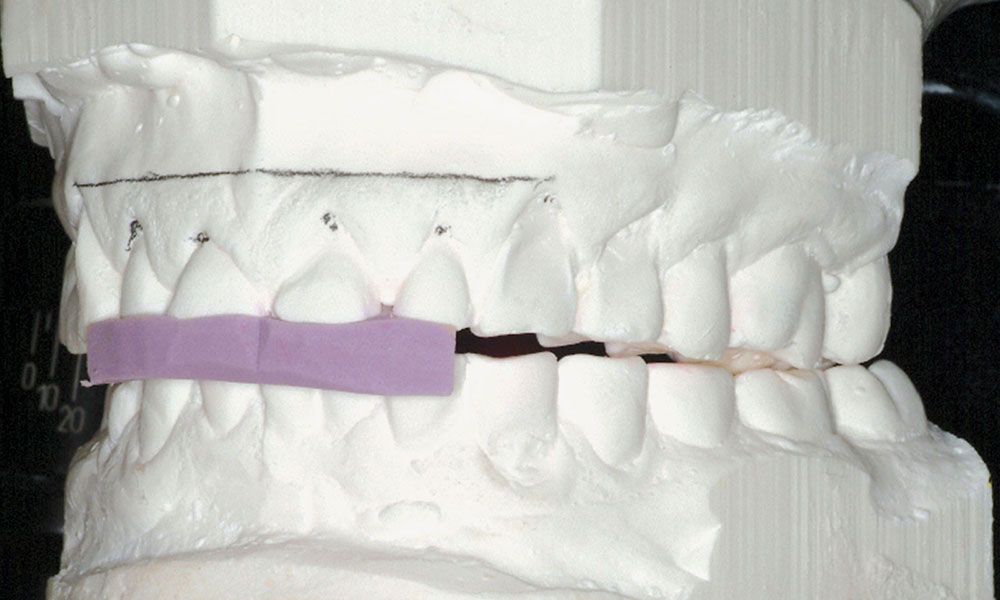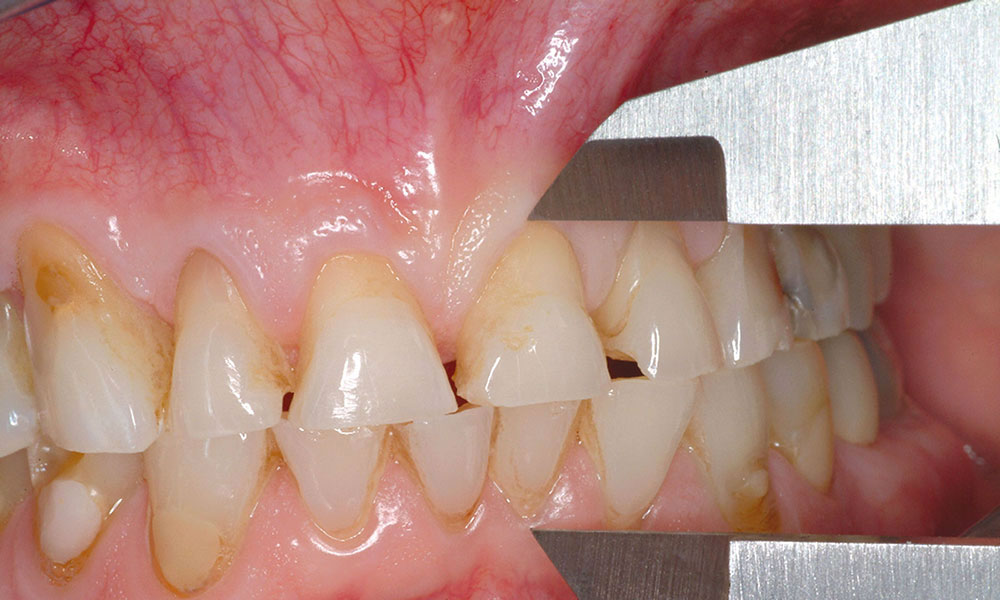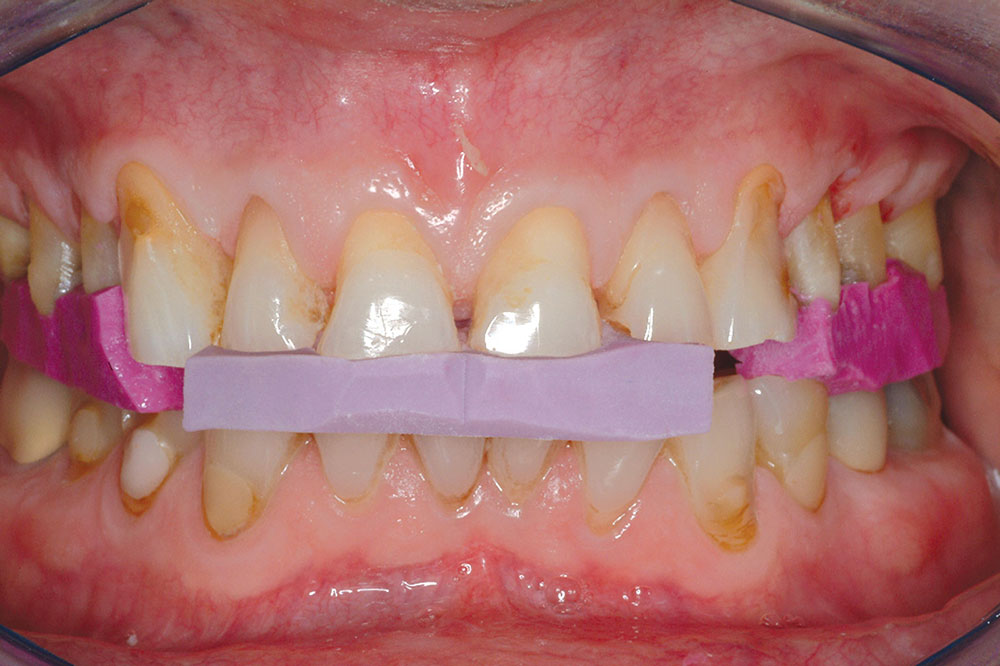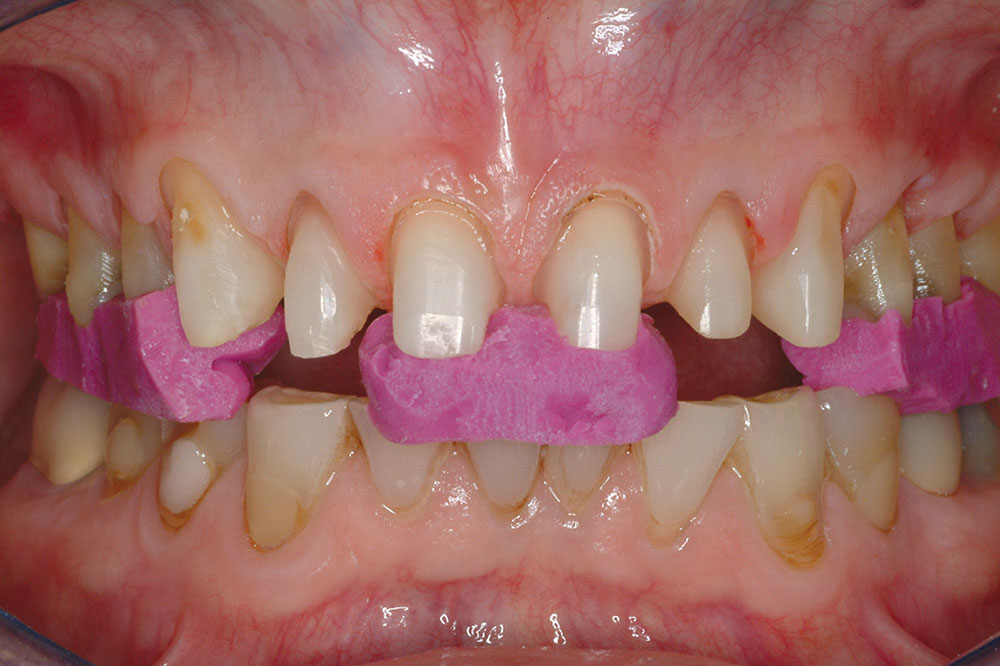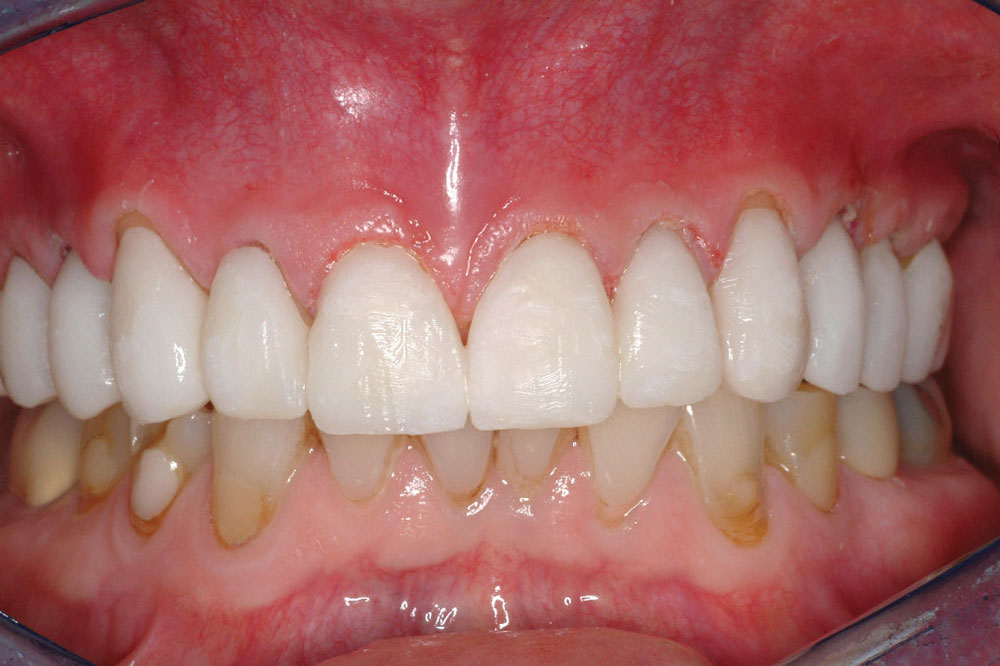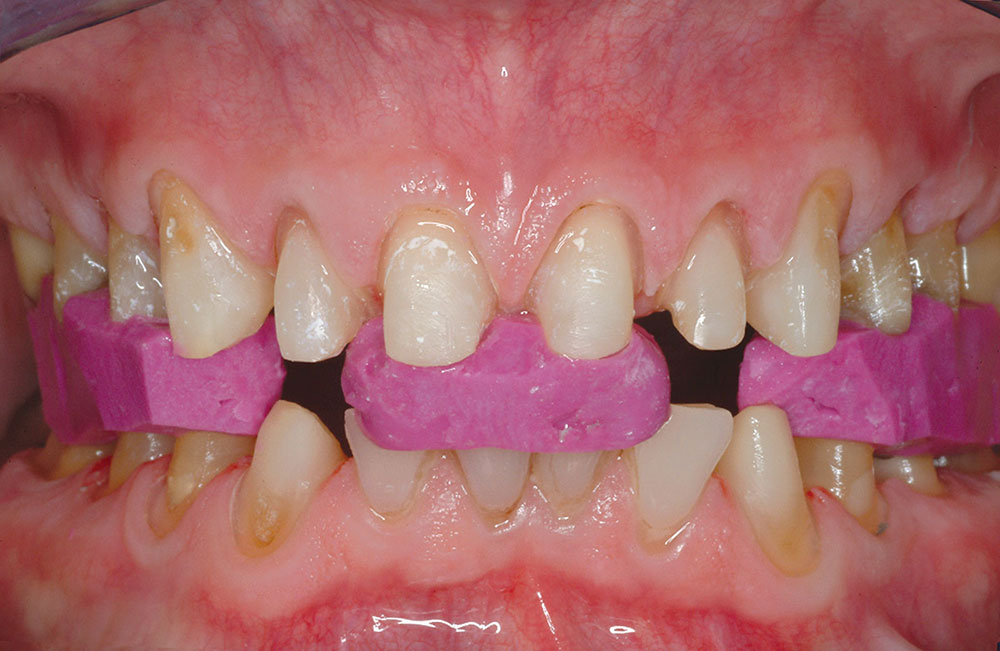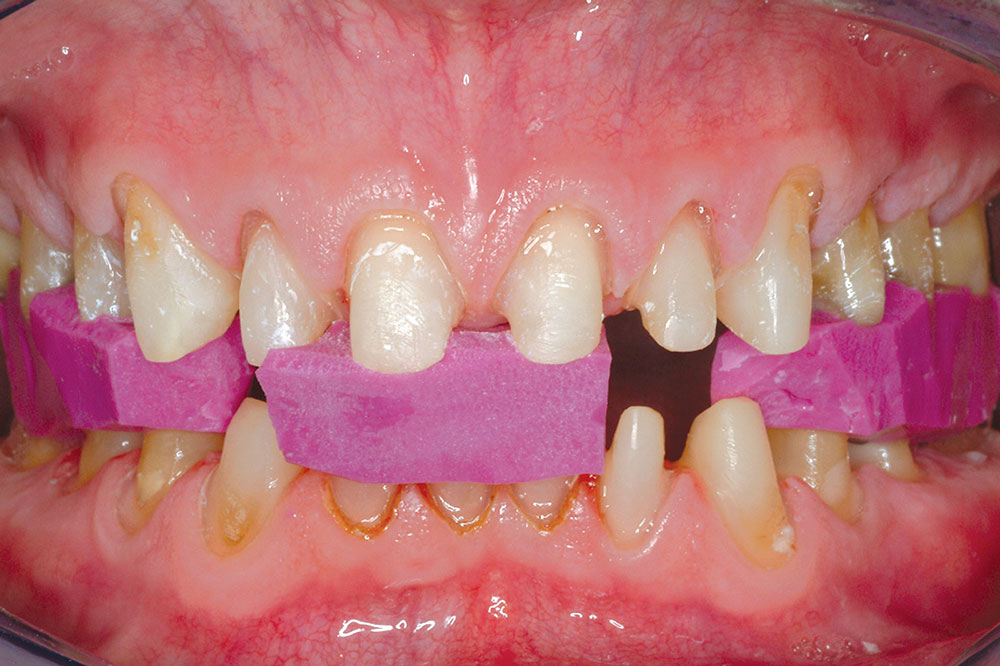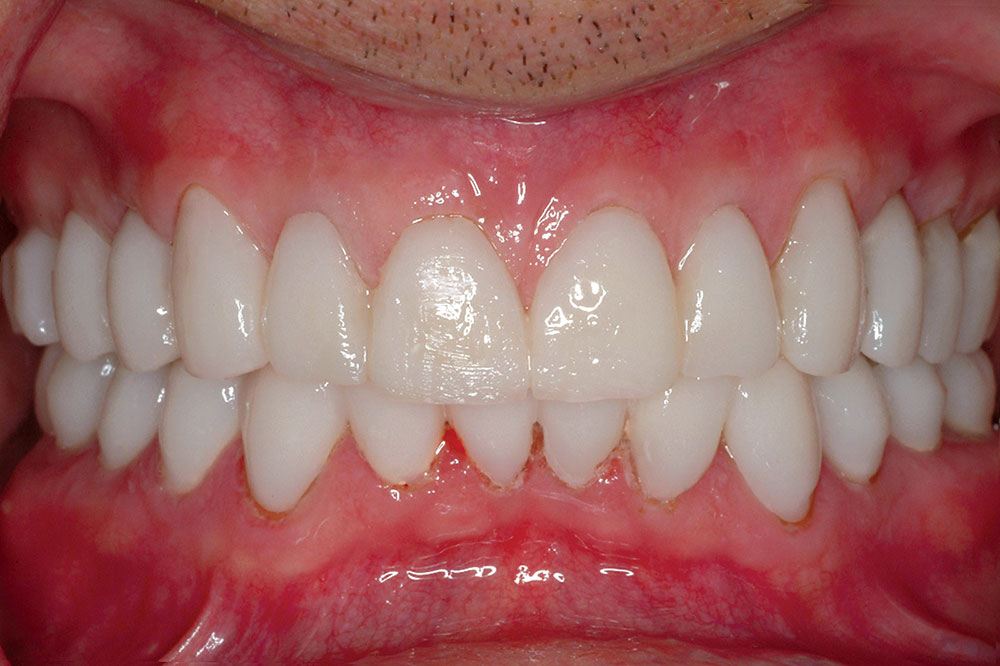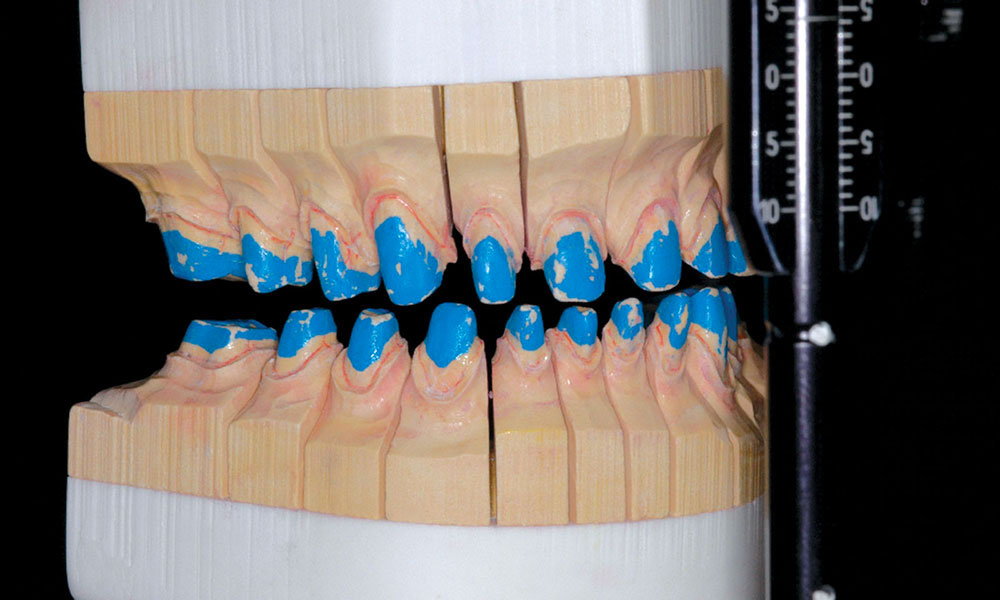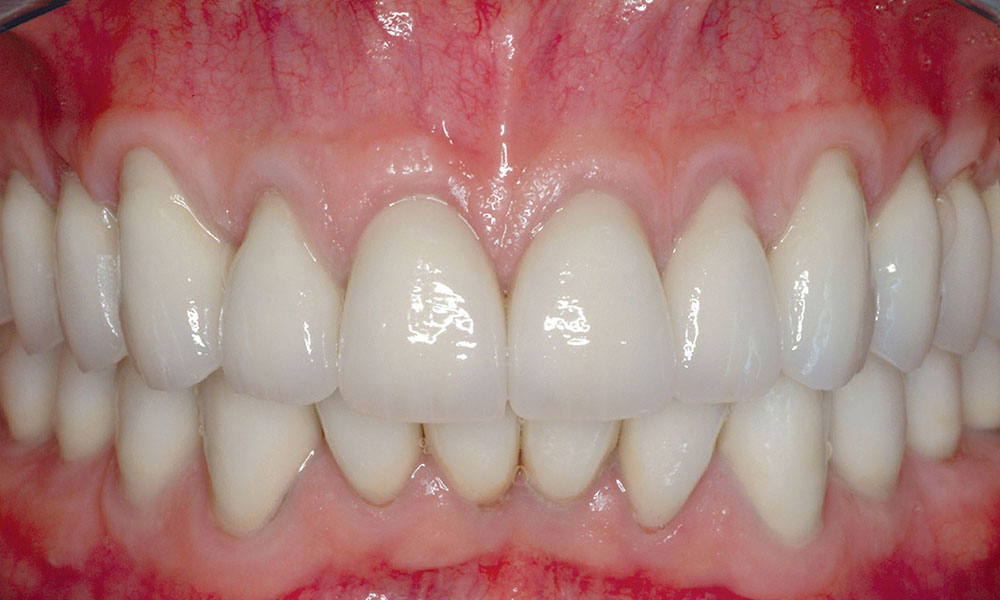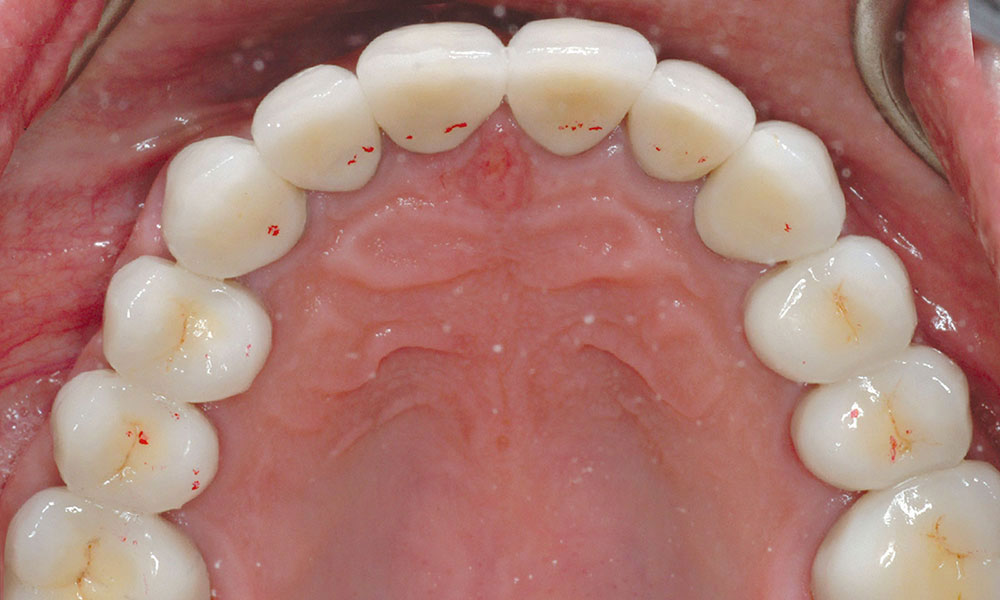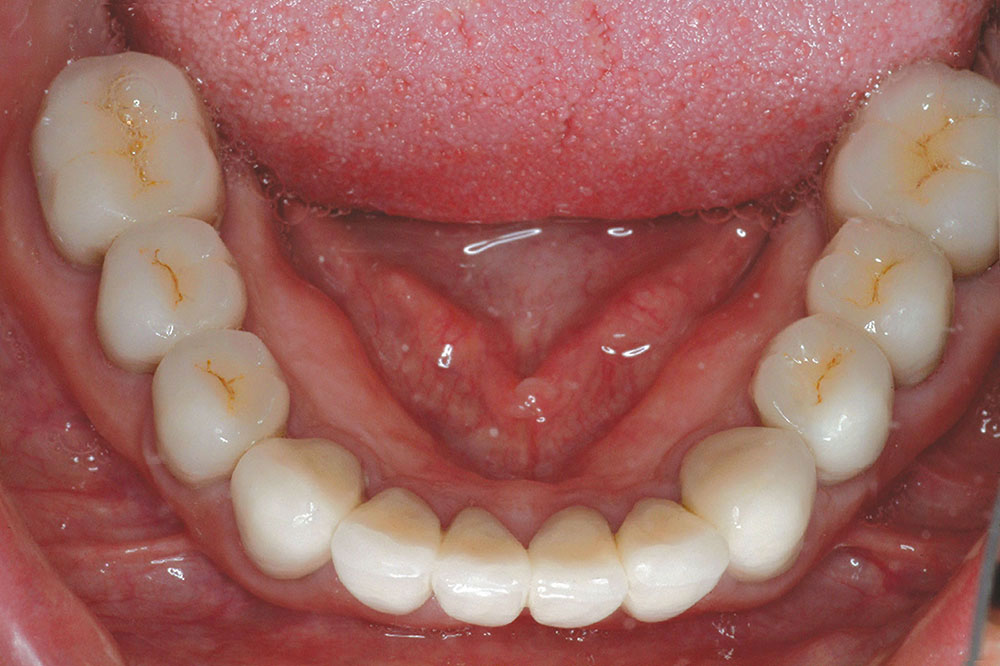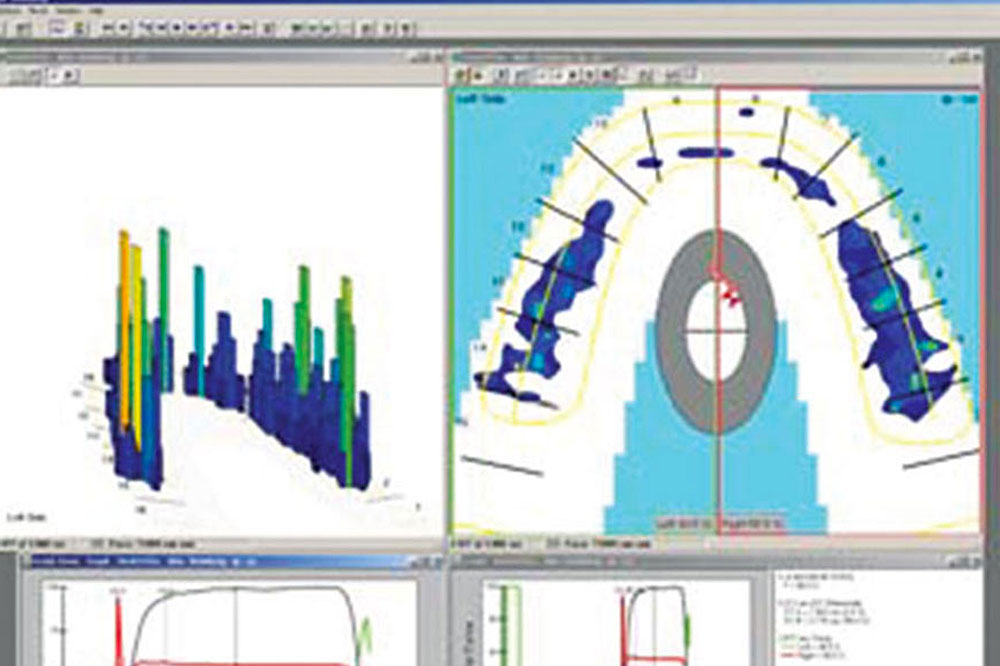A Systematic Approach to Full-Mouth Reconstruction of the Severely Worn Dentition
Restoration of the severely worn dentition is one of the most challenging procedures in dentistry. In order to successfully restore and maintain the teeth, one must gain insight into how the teeth arrived at this state of destruction. Tooth wear can result from abrasion, attrition and erosion.1,2,3,4,5 Research has shown that these wear mechanisms rarely act alone, and there is nearly always a combination of the processes.1,2,3,4,5 Evaluation and diagnosis should account for the patient’s diet, history of eating and gastric disorders, along with the present state of the occlusion. Emphasis must be placed on the evaluation of occlusal prematurities preventing condylar seating into the centric relation position.6 Behavioral factors that may contribute to parafunctional habits and nocturnal bruxism are also important to understand and manage in order to successfully restore and maintain a healthier dentition.7 Once a complete understanding of the etiology of the dentition’s present state is appreciated, a treatment plan can be formulated, taking into account the number of teeth to be treated, condylar position, space availability, the vertical dimension of occlusion (VDO) and the choice of restorative material.8
While all occlusions wear to some degree over the lifetime of the patient, normal physiological wear usually does not require correction.6 Severe or excessive wear refers to tooth destruction that requires restorative intervention. Severe attritional wear can result from occlusal prematurities that prevent functional or parafunctional movements of the jaw. This wear can be seen at the site of the prematurity or on the anterior teeth as a result of the “hit and slide” forward.6 Restoration of the worn anterior teeth then becomes a challenge as the availability of space for prosthetics becomes limited. If lengthening the teeth is a goal in order to achieve a more esthetic smile, then the question of the need to alter VDO subsequently arises.
There is some debate among professionals as to what constitutes the need to open VDO in the restoration of anterior teeth.9 In most cases, clinicians look to alter vertical dimension for one or all of the following reasons: to gain space for the restoration of the teeth, to improve esthetics or to correct occlusal relationships. Understanding what determines the VDO and what effects altering it have on the temporomandibular joint (TMJ), muscle comfort, bite force, speech and long-term occlusal stability are prerequisites to restoring the worn dentition. Spear clearly outlines the principles of VDO and concludes that patients can function at many acceptable vertical dimensions, provided the condyles are functioning from centric relation and the joint complex is healthy. He states that “vertical is a highly adaptable position, and there is no single correct vertical dimension.” He further concludes that the best vertical dimension is the one that satisfies the patient’s esthetic desires and the practitioner’s functional goals with the most conservative approach.9
Vertical dimension is developed by the balance of ramus growth and tooth eruption,9 and is affected by the repetitive contracted length of the elevator muscles during growth and development. Therefore, it is generally measured by a point on the maxilla and a point on the mandible at the area of the first molars. Often, due to posterior prematurities, the muscles of mastication are in a state of imbalance and will close the mandible in a position that is not in alignment with centric relation due to accommodation of the teeth.10 This position is usually forward of centric relation (Fig. 1).
Clinical examination of this condition will reveal anterior tooth wear with minimal posterior wear. When the condyles are seated in the centric relation position and the teeth come together, the posterior teeth act as a fulcrum that prevents the anterior teeth from touching (Fig. 2). This anterior separation may provide enough space for the clinician to restore the esthetic requirements of tooth length while maintaining a position that allows restoration of maximum intercuspation in conjunction with centric relation.10
When starting from a centric relation position, opening of the anterior teeth by 3 mm will yield a posterior separation of approximately 1 mm and stretch the masseter muscle length approximately 1 mm. If the condyles are not in centric relation and are subsequently seated to a more superior position, every millimeter of vertical seating will reduce the masseter muscle length by 1 mm,9 thereby eliminating the need for a true opening of vertical dimension. The following case presentation demonstrates a means to obtain the space required for the restoration of severely worn dentition without altering the VDO.
Case Presentation
A 55-year-old male patient presented with the chief complaint of anterior tooth wear and requested esthetic enhancement (Fig. 3). Clinical examination revealed severely worn anterior teeth and premolars, in addition to bonded restorations on the lingual aspects of the maxillary anterior teeth to restore what appeared to be an erosive process. Advanced abrasion and erosion were present on many buccal surfaces of the canines and premolar teeth (Fig. 4). The patient related a history that included clenching, grinding and, as a young man, gastric regurgitation. His periodontal status included areas of posterior pocketing with advanced bone loss in the second molar regions. The gingiva also exhibited areas of clefting in the anterior regions.
In order to properly diagnose the case, a comprehensive examination was conducted, including a full-mouth radiographic series, caries detection and periodontal probing. Evaluation of the TMJs was unremarkable, with normal jaw opening and range of motion. No joint sounds, signs or symptoms of instability were evident. Joint loading in centric relation was performed utilizing bimanual manipulation and a leaf gauge.11,12 Both methods resulted in no reported tension or tenderness and revealed first point of contacts on the second molars, with a forward slide into the maximum intercuspation position.
Impressions for study casts were then made, along with a centric relation occlusal record utilizing the leaf gauge and a facebow transfer (Fig. 5).11,12,13 Following the mounting of the study casts, it became apparent that by seating the condyles in a centric relation position, the second molars were in premature contact and there was sufficient space gained to restore the anterior teeth to the proper esthetic length (Fig. 6).
Understanding what determines the VDO and what effects altering it have on the temporomandibular joint, muscle comfort, bite force, speech and long-term occlusal stability are prerequisites to restoring the worn dentition.
Treatment Planning
Following periodontal consultation, it was determined that all of the second molars would be extracted due to advanced bone loss. Osseous surgery would follow in all four posterior quadrants, as would esthetic crown lengthening in the anterior region. Due to the advanced wear of the remaining teeth, the treatment plan involved full-coverage restorations on all teeth. The presence of sclerotic dentin and the possibility of continued clenching or bruxism established the need for cemented, as opposed to adhesive, restorations.14,15 For long-term predictability, porcelain fused to metal (PFM) restorations were selected. Zirconia crowns would also have represented an acceptable choice.
Once the treatment plan was accepted, an intraoral composite mockup was performed and photographed to establish an ideal length for the central incisors from an esthetic standpoint (Fig. 7). These images and the measured length of the maxillary central incisors were then communicated to the laboratory technician to aid in the fabrication of a full-mouth diagnostic wax-up, which would be completed with the understanding that the second molars were to be removed and that esthetic crown lengthening procedures would be performed to raise the gingival tissues in the anterior region (Fig. 8). Prior to waxing the case, the ceramist fabricated a centric relation anterior index that would maintain the centric relation position at the desired VDO during the preparation phase (Fig. 9). This index can be made from hard laboratory putty or pattern resin.
Tooth Preparation
Following a two-month period of periodontal healing and maturation, the patient was scheduled for appointments on two consecutive days to prepare first the maxillary, then the mandibular arches. On the first day, the centric relation index was utilized to measure from the marginal tissue of tooth #9 to the marginal tissue of tooth #24, and 2.38 mm of anterior space was gained by simply having the condyles seated in centric relation. This anterior opening was accomplished without appreciably stretching the elevator muscles (Figs. 10, 11). Preparation of the maxillary right and left posterior teeth was then performed using the index to confirm clearance. With the index in place, posterior bites were taken utilizing a rigid bite-registration material (Futar® D [Roydent™ Dental Products; Johnson City, Tenn.]) (Fig. 12).
The index was then removed, and the anterior teeth were prepared utilizing the posterior bite records to verify clearance. Following completion of the anterior preparations, an anterior bite was obtained with the posterior bite records in place. By systematically recording the posterior bite with the centric index in place and then the anterior bite with the posterior bites in place, the centric relation and vertical dimension positions were maintained (Fig. 13).
A full-arch polyether impression (Permadyne™ Garant™ L [3M™ ESPE™; St. Paul, Minn.]) was then taken, followed by the fabrication of provisional restorations (Luxatemp® [DMG America; Englewood, N.J.]) created in three sections: two posterior sections from molar to first premolar, and an anterior section from canine to canine. Because the maxillary arch was prepared on the first day, occlusion was adjusted against the provisionals through equilibration of the mandibular teeth (Fig. 14).
During the second visit, the maxillary provisional restorations were removed and the anterior bite record from the first visit was inserted to hold the centric relation and vertical dimension while the mandibular posterior teeth were prepared. Following bilateral preparation of mandibular posterior teeth, bite records were taken with the anterior bite record in place (Fig. 15). The mandibular anterior teeth were then prepared utilizing the posterior bite records to check clearance, and a new anterior bite record was taken (Fig. 16).
A polyether final impression was then made, and mandibular provisional restorations were fabricated from the index of the diagnostic wax-up. As with the maxillary provisional restorations, the mandibular provisionals were fabricated in three sections (Fig. 17). The provisional restorations were subsequently equilibrated to establish maximum intercuspation in centric relation along with canine guidance and anterior coupling in protrusive guidance (Fig. 18).
Once the provisional restorations were equilibrated and the esthetics and phonetics were deemed satisfactory, an occlusal bite record was taken of the maxillary and mandibular provisional restorations. The maxillary posterior sections were removed and, with the anterior section still in place, posterior bite records were taken. The anterior section was then removed and, with the posterior bite records in place, an anterior bite record was taken.
Impressions of the provisional restorations were made, and a facebow recording was taken of the maxillary provisionals. Utilizing the facebow, the maxillary provisional model was mounted on the articulator; the mandibular model was then mounted using the occlusal bite record of the provisionals against each other. The ceramist was thus able to fabricate a custom incisal guide table (Fig. 19). A custom incisal guide table, as described by Dawson, allows the ceramist to reproduce the anterior guidance established in the mouth with the provisional restorations.6 The protrusive path and lateral excursions were recorded in pattern resin on a flat guide table by movement of the articulator pin in the unset resin.6
Once the incisal guide table was fabricated, cross mounting began. The maxillary preparation model was mounted against the mandibular provisional restorations utilizing the third set of bite records. The mandibular preparation model was then mounted against the maxillary preparation model with the first set of bite records (Fig. 20).
Along with digital photographs of the preparations and provisional restorations, the ceramist had all of the information necessary to fabricate the definitive restorations. A putty index was made from the provisional model to confirm the exact length and shape for the final restorations, while the custom guide table provided information on the shape of the lingual aspects and the path taken for the canine and protrusive guidance.
Definitive Restorations
Following a three-week period, the provisional restorations were removed, and the case was tried in and evaluated for esthetics, occlusion and phonetics. Because the ceramist followed the guidelines of the provisional restorations, minimal adjustments were necessary at this stage (Figs. 21–23). Final equilibration of the case was accomplished with a leaf gauge and a computerized occlusal analysis system (T-Scan® III [Tekscan Inc.; Boston, Mass.]) (Fig. 24).16,17
Conclusion
Severe wear cases present many challenges to the restorative dentist, including gaining the space to create restorations that satisfy the patient’s esthetic desires, while also fulfilling occlusal and functional parameters that are essential for long-term success. The case presented has demonstrated that the required space may be obtained by seating the condyles in centric relation position. The maintenance of severe wear cases can be ensured by the development of proper anterior guidance that allows for posterior disclusion within the patient’s envelope of function. Taking this guidance into account during provisionalization allows minimal adjustments in the definitive restorations and greater long-term predictability of the case.
Dr. Jay Lerner is in private practice in Palm Beach Gardens, Florida. He is a senior clinical instructor with the Rosenthal Institute’s Aesthetic Advantage program at New York University College of Dentistry and Guys Hospital in London, England. Contact him at info@lernerlemongello.com or 561-627-9000.
Acknowledgment
The author expresses his gratitude to Dr. Robert Holt for his expertise in managing the periodontal aspect of this case, and Mr. Jason Kim, Oral Design, New York, N.Y., for the laboratory fabrication of the restorations depicted. The author declares no financial interest in any product referenced herein.
References
- ^Addy M, Shellis RP. Interaction between attrition, abrasion and erosion in tooth wear. Monogr Oral Sci. 2006;20:17-31.
- ^Beyth N, Sharon E, Lipovetsky M, Smidt A. [Wear and different restorative materials — a review.] [Article in Hebrew] Refuat Hapeh Vehashinayim. 2006 Jul;24(3):6-14.
- ^Grippo JO, Simring M, Schreiner S. Attrition, abrasion, corrosion and abfraction revisited: a new perspective on tooth surface lesions. J Am Dent Assoc. 2004 Aug;135(8):1109-18.
- ^Verrett RG. Analyzing the etiology of an extremely worn dentition. J Prosthodont. 2001 Dec;10(4):224-33.
- ^Litonjua LA, Andreana S, Bush PJ, Cohen RE. Tooth wear: attrition, erosion, and abrasion. Quintessence Int. 2003 Jul;34(6):435-46.
- ^Dawson PE. Functional Occlusion: From TMJ to Smile Design. St. Louis, MO: Mosby; 2006 Aug:432-3.
- ^Neff P. Trauma from occlusion. Restorative concerns. Dent Clin North Am. 1995 Apr;39(2):335-54.
- ^Dahl BL, Carlsson GE, Ekfelt A. Occlusal wear of teeth and restorative materials. A review of classification, etiology, mechanisms of wear, and some aspects of restorative procedures. Acta Odontol Scand. 1993 Oct;51(5):299-311.
- ^Spear FM. Approaches to vertical dimension. Adv Esthet Interdiscip Dent. 2006;2(3):2-12.
- ^Sesemann MR. Enhancing facial appearance with aesthetic dentistry, centric relation, and proper occlusal management. Pract Proced Aesthet Dent. 2005 Oct;17(9):615-20.
- ^Long JH Jr. Location of the terminal hinge axis by intraoral means. J Prosthet Dent. 1970 Jan;23(1):11-24.
- ^McKee JR. Comparing condylar positions achieved through bimanual manipulation to condylar positions achieved through masticatory muscle contraction against an anterior deprogrammer: a pilot study. J Prosthet Dent. 2005 Oct;94(4):389-93.
- ^Fenlon MR, Woelfel JB. Condylar position recorded using leaf gauges and specific closure forces. Int J Prosthodont. 1993 Jul-Aug;6(4):402-8.
- ^Tay FR, Pashley DH. Resin bonding to cervical sclerotic dentin: a review. J Dent. 2004 Mar;32(3):173-96.
- ^Kwong SM, Tay FR, Yip HK, et al. An ultrastructural study of the application of dentine adhesive to acid-conditioned sclerotic dentine. J Dent. 2000 Sep;28(7):515-28.
- ^Kerstein RB, Wilkerson DW. Locating the centric relation prematurity with a computerized occlusal analysis system. Compend Contin Educ Dent. 2001 Jun;22(6):525-8.
- ^Kerstein RB. Disocclusion time-reduction therapy with immediate complete anterior guidance development to treat chronic myofascial pain-dysfunction syndrome. Quintessence Int. 1992 Nov;23(11):735-47.

